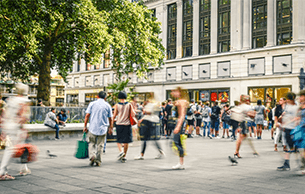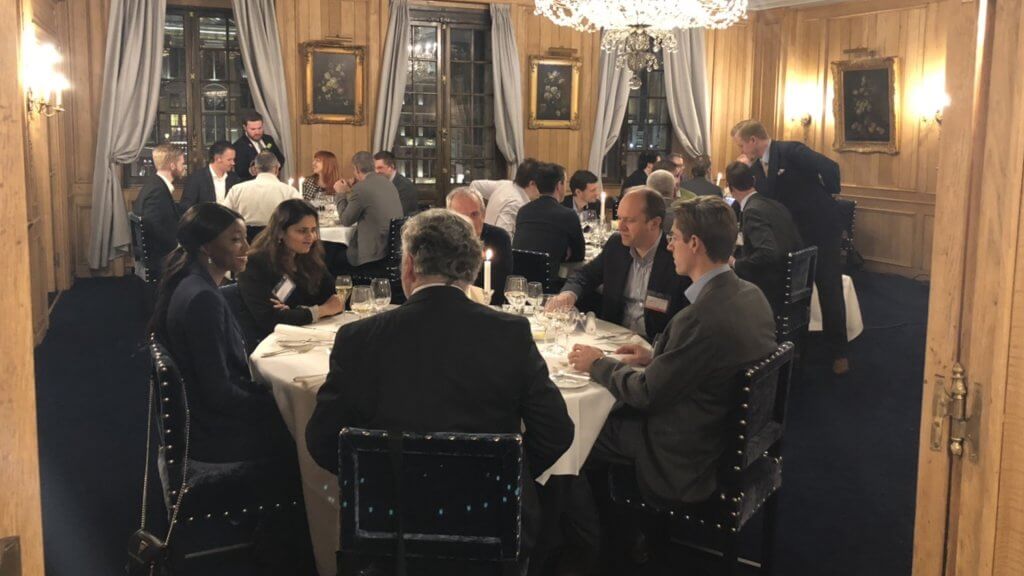A shift for the high street – from shopping to social

Internet shopping is undoubtedly flourishing, and for many it would seem that high street retail is becoming a relic of the past. Not so – studies have shown a surprising 40% increase in weekly shoppers hitting the high street in 2015, and a predicted 44% increase for 2018. This increase of activity may be down to shopping increasingly seen as a social activity. So how can high street retailers capture this resurgence?
We’ve teamed up with QUIZ clothing, a leading retailer of plus size dresses, to explore the how the high street is flourishing thanks to in-store technology.
Technology for your store
The main focus of technology for retail has, in the past, been for e-commerce. But, recent research still indicates that people value brick-and-mortar stores — in fact, 81% of UK customers said that the physical stores were vital to the shopping experience. So, when it comes to improving the high-street and implementing in-store technology, what should retailers be getting involved with?
A customer favourite of in-store technology is the information kiosk, powered by artificial intelligence. However, not all retailers are getting on board — 66% of those surveyed in one study said that they were yet to encounter artificial intelligence in-store. Do retailers realise the huge potential of this type of technology? In fact, 60% of consumers are attracted to the idea of using them to find products that they weren’t aware of before. As an example, in QUIZ’s digital stores, an in-store kiosk enables visitors to browse the full collection (even if some products aren’t available in-store) and order them to their homes or local store.
With in-store technology, staff can be quickly informed of anything a customer might need. One way to do this is by providing employees with handheld iPads or other smart tablets. This allows staff to find the answer to a query, check a product’s availability and place orders for the customer without having to use a fixed computer. This can improve the customer’s experience and help build a stronger brand-to-customer relationship.
Augmented reality is fast becoming the next “big thing” in technology, and in-store retail tech isn’t missing out. This can help the customer with their purchase decision and help them visualise themselves with the product. Although this can be made available through an app, there are also ways to introduce it in-store. In a fashion store for example, a smart mirror can allow customers to dress themselves in different outfits without actually trying them on. Similarly, in a furniture store, visitors can upload a photo of their home and try out pieces of furniture to see if it would suit their rooms.
Brand representation
Technology can assist in increasing store visits and boosting brand loyalty. It’s possible that having in-store technology in a physical shop can make a brand more attractive to customers, and potentially a better option over competitors. Some retailers are recognising this too as one report suggested that 53% of retailers view investments in new automations and appliances in-store as vital to keep up with their competitor activity.
The look of a brand in the eyes of customers can also be influenced. One study revealed that 46% of those surveyed said that a positive experience due to well-functioning technology increases their brand confidence.
Technology can fail
We all know that technology, as wonderful as it can be, can also be temperamental. This can be frustrating and add time onto a customer’s visit which may result in a negative experience.
According to RetailWeek, more than 65% of customers have had issues with in-store technology failing. Unfortunately, this then affects sales — one third of customers said that they were unable to complete their transactions because of the technology difficulties.
One bad experience can be enough to turn a customer away, and the same goes for in-store technology. Retailers must keep software and technologies updates and well-maintained to avoid issues like this. Similarly, if technology is difficult to use, this can deter customers from getting involved with it. This could make people feel excluded too — in-store tech should be simple to use, and visitors should be accompanied when using it if it’s more complex.
In-store technology is certainly becoming a vial component to the shopping experience. Although customers are happy to shop online, they also enjoy shopping as a leisure activity and appreciate an interactive experience when doing so.







